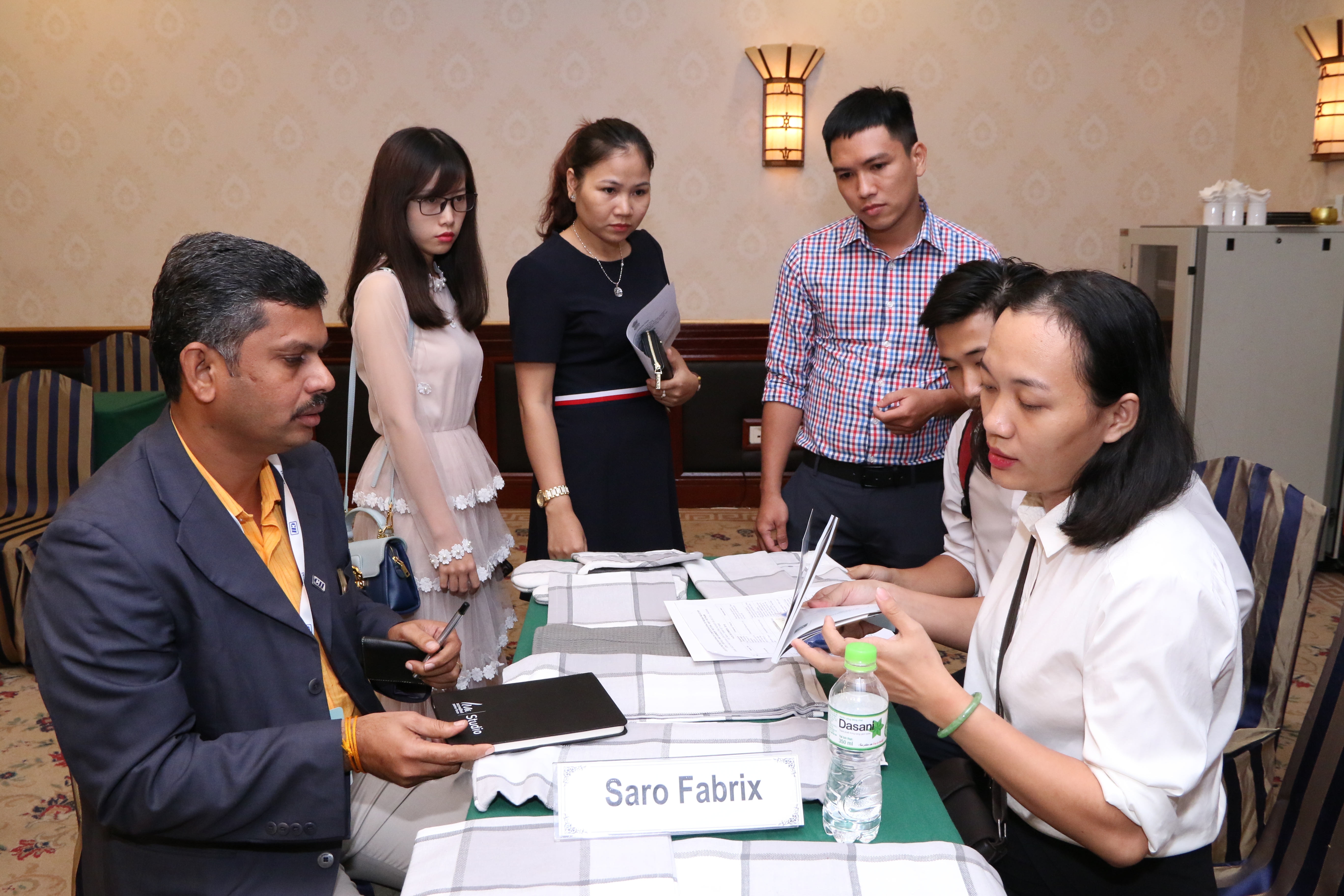A delegation from the Confederation of Indian Industry, Tiruppur (CII), visited Ho Chi Minh City on Wednesday and Thursday to meet Vietnamese businesses and scope for investment opportunities in textiles and garments.
The Consulate General of India in the city organized a business interaction at Rex Hotel in District 1, which was attended by representatives of Vietnamese textile organizations AGTEK, VCOSA, VINATEX; the Indian Chamber of Commerce (INCHAM); and the Vietnam Chamber of Commerce and Industry (VCCI).
The business interaction was addressed by Consul General of India Dr. K Srikar Reddy; Pham Xuan Hong, chairman of AGTEK; T. Nallamuthu, chairman of the CII Karur chapter; and Dilbagh Singh, chairman of INCHAM, the consulate said Wednesday in a press release.
“2018 has been an extraordinary year in terms of high-level exchanges between our countries,’ Dr. Reddy said.
Vietnamese Prime Minister Nguyen Xuan Phuc visited India in January 2018, late State President Tran Dai Quang paid a state visit to the South Asian country in March 2018 and Indian President Ram Nath Kovind visited Vietnam from November 18 to 20, 2018, the diplomat said.
Engagement at the highest levels has strengthened the bonds of friendship and fulfilled the meaning of the ‘comprehensive strategic partnership’ between Hanoi and New Delhi at all levels, with economy and trade as strategic objectives, he added.
Vietnam and India upgraded their strategic partnership, established in 2007, to the comprehensive strategic partnership In September 2016.
India’s economic reforms are reflected in the World Bank’s Ease of Doing Business Index, as the country has climbed 53 places, from 130 in 2016 to 77 in 2018.
Vietnam’s economy grew 6.2 percent in 2000-2017. Its GDP growth in January-September 2018 at 6.98 percent was the highest in the past eight years.
Bilateral trade between the two countries reached US$7.62 billion in 2017, according to Vietnam’s General Statistics Office.
That topped $9.18 billion in January-October this year, up 47 percent year on year, the office said.
The GSO estimated Indian investment at $877 million by September 2018.
The repeated visits by Indian business delegations and increasing bilateral trade are a true reflection of the interests and purposiveness of Indian enterprises, the consulate said in the press release.
Vietnam and India are among the top five exporting countries in textiles and clothing and their manufacturing/trading interests converge at several points.
In the textile sector, Vietnamese exports exceeded $31 billion in 2017; however, Vietnam also imported $19 billion worth of input materials, especially yarn and fabric in 2017.
In April 2017-March 2018, India’s global exports in textiles and clothing were about $36.73 billion while its shipments to Vietnam reached $555 million, rising about 42 percent over the corresponding period of 2016-17.
 |
| A business matching session at a B2B meeting in textiles and garments in Ho Chi Minh City on December 19, 2018. Photo: Consulate General of India |
In April-August 2018, Indian textile exports to Vietnam surged more than 59 percent over the corresponding period of 2017-18 to $257 million.
As per the India-ASEAN FTA, most types of yarn, woven fabric and knit fabric can be imported duty-free from India from January 1, 2019.
India is one of the suppliers of high-quality materials, fabrics, and machinery at the most competitive prices in the world and is a reliable international partner of Vietnam.
Vietnamese companies are also welcome to explore the gigantic market of 1.3 billion people in India by investing in the production of yarn, fabric, and ready-made garments in India, as the government of India allows 100 percent FDI under the automatic route in textiles.
India is one of the most cost-efficient textile manufacturing countries in the world with the presence of entire value chains for textile production, beginning from the production of natural fibers to the production of yarn, fabric and apparel within the country.
Hong, chairman of AGTEK, said that Vietnam is an ideal destination for investors in view of the competitive labor costs and preferential policies in textile and garment sectors.
The Vietnamese industry offers opportunities to Indian companies for investment and to set up textile and garment production units to benefit from the competitive advantages of Vietnamese FTAs and labour forces.
There also lie several opportunities in supplying yarn, textiles and machinery to the Vietnamese industry and in the upskilling of the labour force.
The industry can benefit by forming supply chains to take advantage of evolving global trade conditions while ensuring continued growth and development of this vital industry in the new technological era of Industry 4.0.
Like us on Facebook or follow us on Twitter to get the latest news about Vietnam!



















































